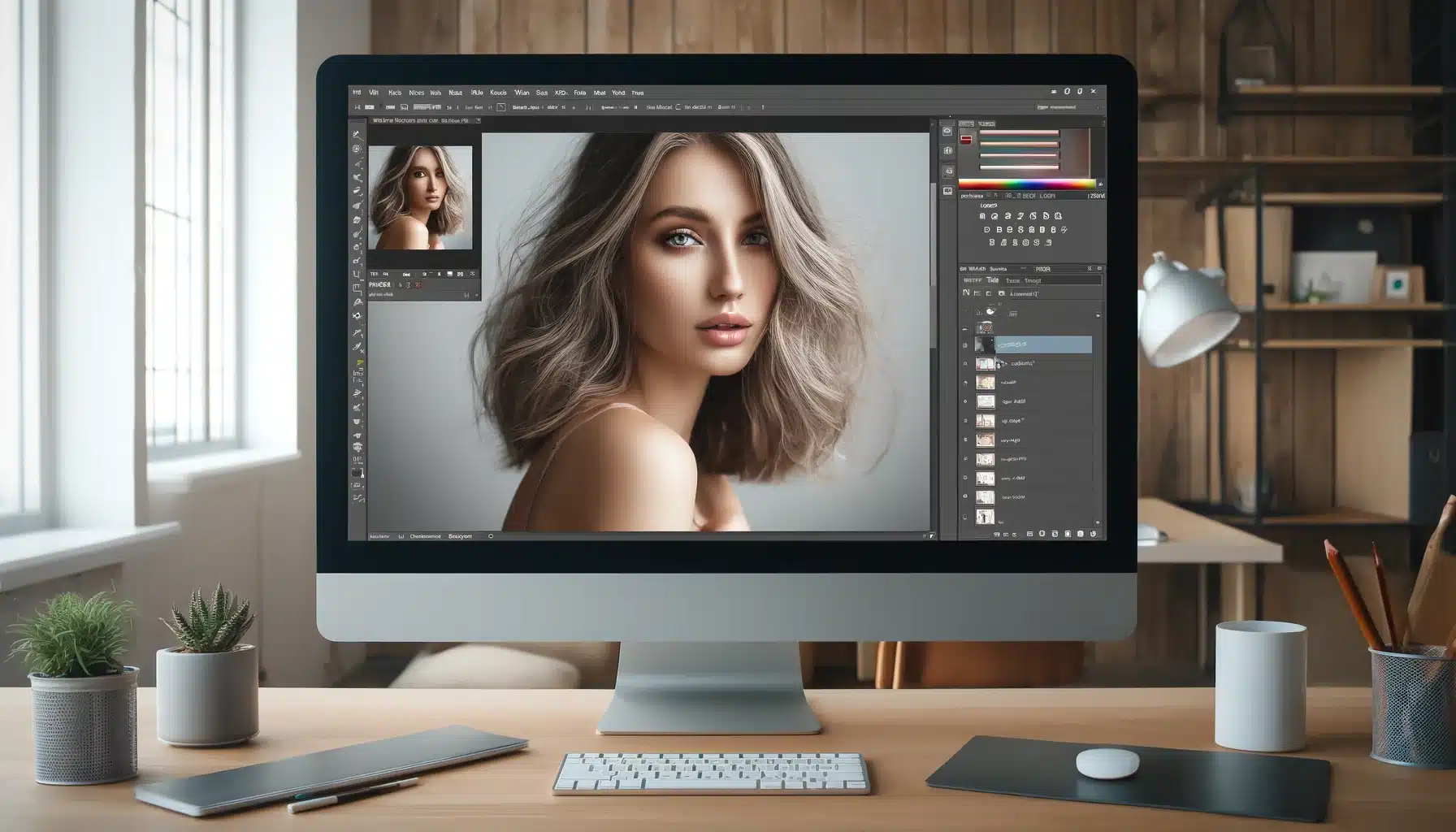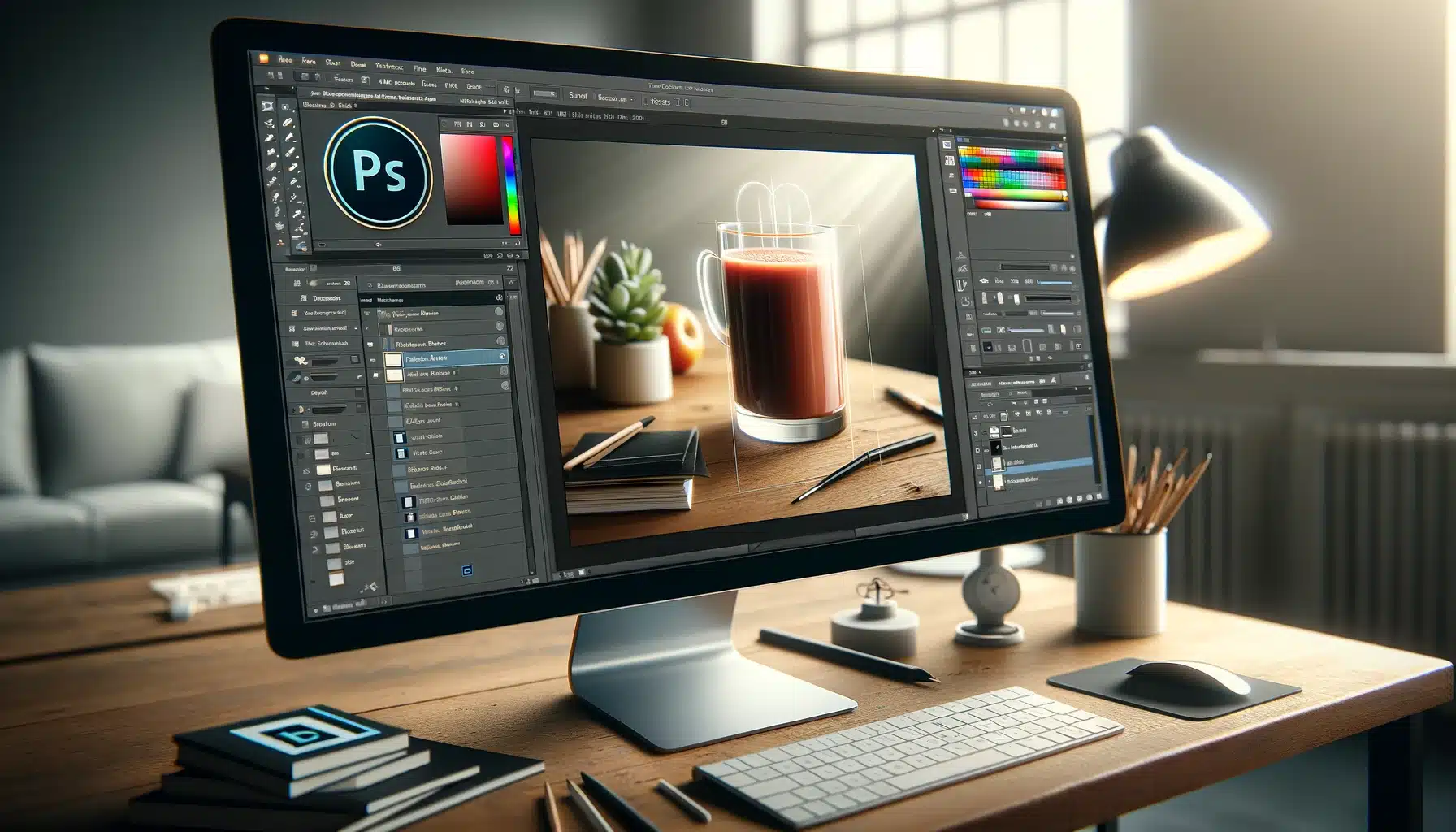
How to Blur Background in Photoshop – An Introduction
Blurring the backdrop of a picture can make your object stand out and look amazing. It helps to reduce distractions and focus the viewer’s attention. Learning how to blur background in Photoshop is a useful skill for anyone interested in photography or photo editing.
In this guide, we will explore different methods to blur backgrounds in Photoshop. You will learn step-by-step techniques, from basic options to advanced methods. We will also share tips to avoid common mistakes and achieve professional results. Let’s get started!
Table of Contents
Understanding the Importance of Blurring Backgrounds in Photography

Blurring the background of a photograph is a popular technique in photography that helps to emphasize the selective focus by reducing distractions. Whether you’re working with self-portrait shots, product images, or artistic compositions, learning how to blur backgrounds effectively can significantly enhance the visual appeal of your photos. Let’s explore various methods to achieve hazy backgrounds in Adobe Photoshop, and convert your snaps into stunning, professional-looking content.
Enhancing Subject Focus
Concealing the background helps to draw the viewer’s attention directly to the main subject. By reducing the detail and sharpness of the background elements, the subject stands out more prominently.
This is particularly useful when dealing with portrait backgrounds.
Creating Depth and Dimension
A distorted background can add a sense of depth to a photo, making it look more three-dimensional. This technique mimics the shallow depth-of-fields effect that is often achieved with high-quality lenses.
Reducing Distractions
In many photos, the backdrop can be cluttered or distracting. Smearing these elements can help to simplify the photograph and keep the viewer’s focus on the important parts.
Aesthetic Appeal
A soft, clouded backdrop can add a touch of elegance and professionalism to your content. This is particularly useful in portrait photography and product shots where you want to craft a polished look.
Now that we understand it is important, let’s move on to preparing your photograph for editing in Adobe Photoshop.
Preparing Your Image for Editing in Photoshop
Before diving into the various smudging techniques, it’s essential to prepare your image correctly in Photoshop. Proper preparation ensures that you achieve the best results when applying the blur effect or practicing the blur photography.
Importing and Duplicating
- Open Photoshop: Launch Photoshop on your computer and open the snapshot you want to edit by going to File > Open and selecting your photo.
- Clone the Background Layer: Right-click on the backdrop layer in the Layers and pick Identical Layer. This creates a copy of your original photo, allowing you to work non-destructively.
Cleaning Up the Image
- Be Aware to Remove Unwanted Elements: Use Healing Brush, Clone Stamp, or Spot Healing Brush to remove unwanted objects from your appearance.
- Adjust Exposure and Colors: Make any necessary adjustments to the exposure, contrast, and color balance of your photograph using adjustment layers. This ensures your snapshot taken from video or portraits looks its best before you start concealing the backdrop.
Selecting the Imagery
- Use the Quick Selection: Pick the Quick Selection from the toolbar and paint over your subject to generate a smart choice. You can refine this range using the Select and Mask feature for more precision.
- Feather: To initiate a smooth transition between the snap and the background, feather the choice by going to Select > Modify > Feather and entering a value between 1 and 3 pixels.
Saving Your Work
- Save as a PDF File: Save your work as a PSD file by going to File > Save As and selecting Photoshop (.PSD). This preserves all your layers and adjustments for future editing.
- Create a Backup: Always keep a backup of your original image and the initial PSD file to ensure you can revert to them if needed.
With your photo prepared and the theme selected, you’re ready to start smudging the background in Photoshop. Be aware to avoid mistakes and fill your content with creativity while Blurring Backgrounds in Photoshop!
How to Blur Background in Photoshop?
Concealing the background in Photoshop is a great way to make your subject stand out. There are several options in Photoshop to help you achieve this effect. In this section, we’ll cover a simple method using Field Blur.
Using the Field Blur
It is an easy to use feature and gives you control over the blur intensity. Follow these steps to blur the background in Photoshop:
1. Open File in Photoshop: Launch Photoshop. Go to File > Open and pick your imagery.
2. Copy the Background Layer: Right-click on the background layer in the Layers panel. Pick Identical Layer. Rename the new layer to “Blurred Background”.
3. Pick the Subject: Use the Quick Selection. Paint over your subject to create a assortment.
4. Invert: Go to Select > Inverse. This will select everything except your subject.
5. Apply the effect: Go to Filter > Blur Gallery > Field or Focal Blur. Adjust the blur slider to your liking. Get on OK to apply the blur. Press Ctrl + D (Windows) or Cmd + D (Mac) to deselect.
Common Mistakes to Avoid
Here’re few photo editing mistakes which we have pin-pointed to avoid:
| Common Mistake | Description | Solution |
|---|---|---|
| Over-smearing | Applying too much blur can make the image look unnatural. | Adjust the blur slider carefully. Aim for a natural look by gradually increasing the blur intensity. |
| Poor Selection | An inaccurate choice-of-area can cause parts of the imageries to blur unintentionally. | Ensure to make smart choice. Spend time refining the edges using the Pick and Mask feature. |
Smudging the background in Photoshop can make your shots look more professional and focused. By following these steps and pin-point mistakes, you can easily achieve this effect and enhance your image. Now you know how to blur background in Photoshop effectively.
[Bonus Method] Photoshop Background Blur Tutorial via Utilizing the Tilt-Shift Blur Tool?

The Tilt-Shift Blur in Photoshop is perfect for creating a miniature effect, where the scene looks like a small model. It’s also great for concealing the backdrop while keeping a specific zone in photo focus.
How to Create a Blurred Background in Photoshop:
1. Open File in Photoshop: Launch Photoshop and open your image by selecting File > Open.
2. Clone the Backdrop Layer: Make replica of the layer by right-clicking on the backdrop layer and selecting Matching Layer. Rename it to “Tilt-Shift Blur”.
3. Select the Tilt-Shift Blur: Go to Blur Gallery > Tilt-Shift. This opens the Tilt-Shift Blur options.
4. Position the Blur: A set of lines will appear on your image. Adjust the ring to position the space and adjust focal point. The regions outside these lines will blur.
5. Adjust the Blur Amount: Use the on-screen handles and Blur to adjust the blur amount. Increase the blur for a stronger effect or decrease it for a subtler look.
6. Fine-Tune the Transition: Adjust the feathering and transition section by moving the dashed lines closer or further from the solid lines. This helps smoothen transition from the focused zone to the distorted backdrop.
7. Apply the Blur: Press OK to apply the effect once you are happy with the settings.
Learning How to Achieve Blurred Backgrounds in Photoshop ensures you understand the nuances and intricacies of achieving the perfect clouded background. By mastering these techniques, you can significantly improve your editing skills and produce high-quality images that stand out. Whether you’re just starting or looking to enhance your skills, knowing how to blur background effectively is essential.
Tips for Achieving the Best Results
Smearing backdrops in Photoshop requires practice and attention to detail. Here are some tips to help you achieve the best results. Let’s explore tips and tricks on How to Blur Background in Photoshop!
Pay Attention to Details
Small details can make a big difference in the quality of your clouded backdrop. Focusing on these aspects can elevate your images to a professional level.
- Feather edges: Use feathering to make smooth transitions between the smeared and sharp areas. Feathering softens the edges, making the blur effect look more natural. To feather, go to Select > Modify > Feather and opt for a feather radius that works best for your image.
- Check for Artifacts: Look for any artifacts or unwanted marks that might appear after applying the blur. Artifacts can be small, distracting elements or inconsistencies caused by the concealing process. Use Healing Brush or Clone Stamp to remove or blend these artifacts into the background.
Use Non-Destructive Editing
Non-destructive editing allows you to make changes without permanently altering your original image. This approach gives you the flexibility to experiment and adjust without worrying about losing your original work.
- Work with Identical Layers: Always clone your backdrop layer before applying any blur effects. This ensures you have the original image intact and allows you to compare the blurred version with the original. You can copy a layer by right-clicking on it in the Layers panel and selecting Second Layer.
- Use Adjustment Layers: Make color and exposure adjustments using adjustment layers to keep your edits flexible. Adjustment layers allow you to change the look of your image without permanently altering the pixels. For example, you can use a Brightness/Contrast adjustment layer to fine-tune the exposure of your picture after applying the blur.
Learning how to form a hazy background in Photoshop, also known as how to apply background blur in Photoshop, involves various techniques. From basic methods like using Field Blur to advanced techniques like combining multiple blurs, there are numerous ways to blur background in Photoshop.
This table provides a quick reference for common issues and straightforward solutions, helping users to effectively blur background in Photoshop and achieve high-quality results.
| Problem | Solution |
|---|---|
| Over-Smearing the Background | Adjust the blur intensity to ensure it looks natural. Use the blur slider carefully to avoid an unnatural appearance. |
| Harsh Edges Between Blur and Imagery | Select > Modify > Feather and opt for a appropriate radius to smoothen transitions. |
| Artifacts and Unwanted Marks | Check for artifacts after applying the blur. |
| Permanent Changes to Original | Always duplicate your background layer before applying any blur effects. This allows you to keep the original one intact for future adjustments. |

Frequently Asked Questions
Here’re some of the most asked question on “How to Blur Background in Photoshop”:
How do you blur the background in Photoshop?
To blur the background in Photoshop, open your file and duplicate the background layer. Indicate your focus with the Quick Selection, then invert this. Apply a blur effect using Blur Gallery and opt for Field Blur, then adjust the settings and click OK.
How do I blur the background of an image?
Open your image in Photoshop and clone the background layer. Use the Quick Selection to choose your focus and invert the choice. Apply a blur effect by going to Blur and then adjust the intensity and click OK.
How do you blur part of a photo in Photoshop?
Open your image in Photoshop and duplicate the background layer. Decide the area you want to blur using the Quick Selection or Lasso. Apply a blur effect by going to Filter > Blur Galleria and choosing Iris Blur or Tilt-Shift, then adjust the settings and click OK.
How to create a blurry background?
Open your image in Photoshop and clone the background layer. Choose your subject using the Quick Selection Tool, then invert the range to choose the background. Apply a blur effect using Filter > Blur Galleria and choose a tool like Field Blur, then adjust the settings and click OK.
Conclusion
Smudging the background in Photoshop can make your photos look amazing. It helps focus on the main subject and reduces distractions. I remember the first time I tried to blur the background of a family photo. I was nervous about making mistakes. But by using the Field Blur and Iris Blur tools, I got a beautiful result. The snap looked much better, and everyone loved it.
Remember to avoid common mistakes like poor assortment. Take your time to refine your edges and use feathering for smooth transitions. Concealing the foreground from background can be fun and rewarding if you follow the right steps.
If you want to learn more and improve your skills, check out our Photoshop and Lightroom courses. They offer step-by-step instructions and tips to help you master photo editing. Visit Photoshop Course and Lightroom Course to get started.
Mastering how to blur background in Photoshop will take your snaps to the next level. Happy editing!
Have a nice photoshoot!
Learn more about Photo Editing with Lightroom and Photoshop:

















